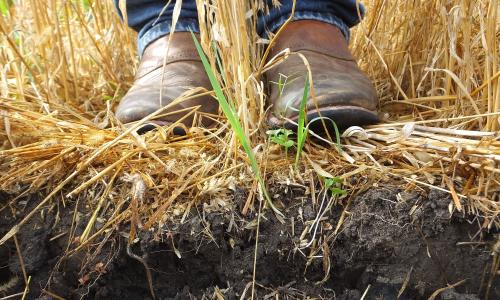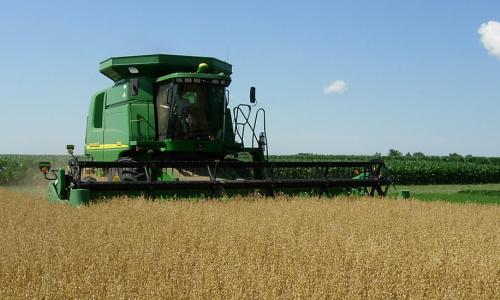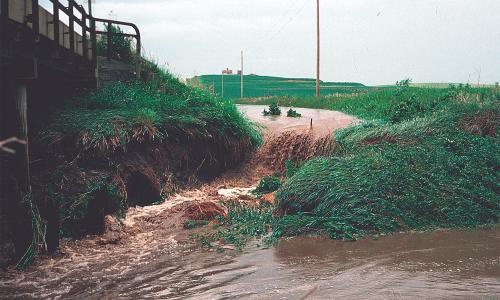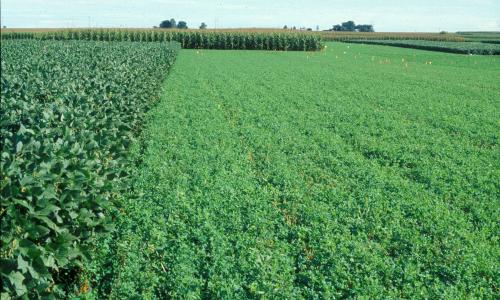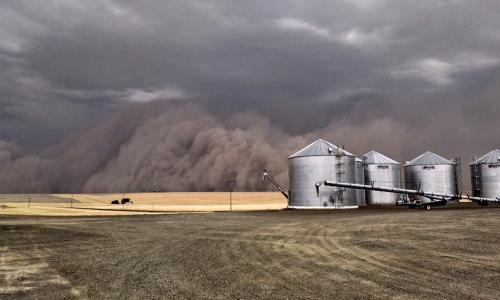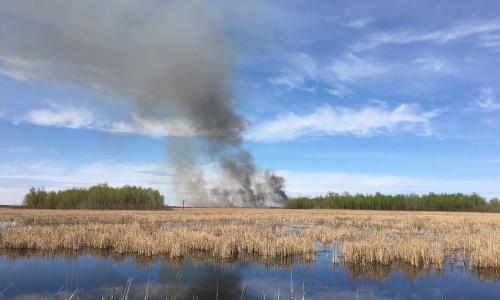Table of Contents
Food production in the United States is at a crossroads.
For decades, the public policies and big corporations that shape our food and agricultural system have pressed farmers to manage their land like food factories—places where inputs in the form of seed, fertilizer, pesticides, or animal feed are converted to outputs in the form of marketable food products.
This model of agriculture is marked by practices such as monoculture (planting the same one or two crops over a large area year after year), raising crops and livestock in isolation from each other, and leaving farmland bare and vulnerable to erosion and nutrient loss between commercial crops.
The industrial model ignores a crucial fact: farms are ecosystems—complex, interdependent networks of living things. Farmers succeed by managing their ecosystems to produce food efficiently. But if we want that success to continue over the long term, we must also manage farm ecosystems sustainably, nurturing their resilience and self-regenerating capacity.
Restoring soil health
Multiple generations of industrial farming have taken a toll on one of our most precious resources: the “dirt” beneath our feet.
Healthy soil is a rich, complex system teeming with microbial and invertebrate life. This diverse biological community performs vital services to maintain the soil’s chemical balance and physical structure so that it can continue producing a rich harvest for generations to come.
Industrial agriculture damages soil through practices that deplete its organic matter and degrade its structure. The result is farmland that needs heavy doses of fertilizer to be productive, is prone to erosion and runoff that pollutes waterways, and is increasingly vulnerable to floods and droughts—a vulnerability that will only worsen as climate change impacts grow more severe.
The solutions are out there: reduce plowing; protect soil year-round with cover crops and more complex crop rotations; incorporate deep-rooted plants on and around farms to hold nutrients and water (while also providing habitat for wildlife and pollinators).
A growing number of farmers, with the help of agroecological science, are taking on the challenge of using these methods to rebuild healthy soils.
Diversifying farm landscapes
“Keep it simple” is often good advice. But when you’re trying to manage a healthy farm ecosystem, it’s a recipe for failure. Natural systems are diverse and complex, and sustainable farm operations aim to mirror and nurture that complexity.
By oversimplifying the landscape in the name of efficiency, industrial agriculture impoverishes the farm ecosystem. This creates resource deficits that farmers must make up through heavy application of fertilizers and pesticides, with serious environmental consequences.
Instead, sustainable agriculture works with nature, using practices such as uncultivated “prairie strips” and integrated crop/livestock management to increase biodiversity and keep the farm ecosystem healthy. This greatly reduces the need for chemical inputs, leaving the farm more viable and productive for the long haul.
Building climate resilience
Climate change is hitting farmers hard already, and it’s only going to get worse. Droughts, floods, extreme heat and other climate impacts will wreak havoc in farm country, reducing yields, increasing erosion and pollution, and threatening both farmers’ businesses and our food supply.
The predominant industrial agriculture model has left farms even more vulnerable to climate impacts. But policies and tools that support farmers in adopting science-based sustainable practices can make agriculture more resilient and adaptable, ensuring that farmers—and our food supply—can withstand climate challenges.
